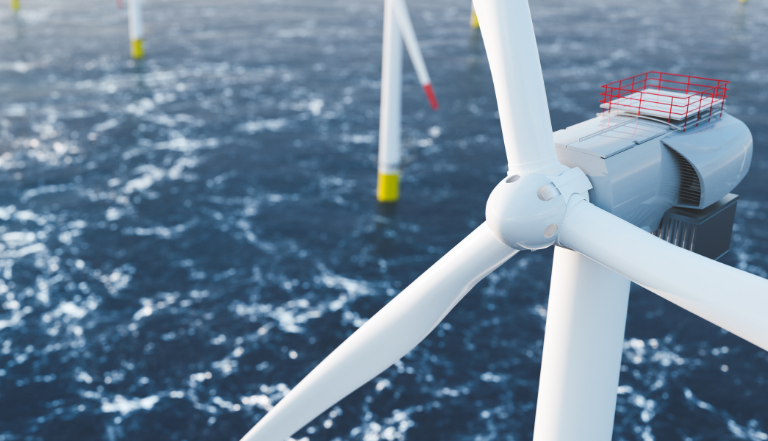This article first appeared in Windech International.
Technological advancement is unquestionably supporting the increased adoption of offshore wind; and as organizations race to achieve Net Zero, many are highlighting the important role of innovation. Measuring innovation and technological advancement is not straightforward but one effective way to overcome the challenge is through careful analysis of patent filing data: Patentable inventions often indicate successful R&D activities. A joint report by the European Patent Office (EPO) and International Energy Agency (IEA) analyses global trends in clean energy technology innovation and provides some useful insight into innovation in the wind energy sector.
The “revealed technological advantage”
The EPO-IEA report discusses the “relative technology advantage” of certain countries or regions over others, derived by a greater level of technological innovation and specialism. The EPO-IEA report defines a metric to measure this level of specialization of a region in a certain technical field - the revealed technological advantage (RTA). The RTA is defined as a country’s share of international patent filings in a particular field of technology divided by the country’s share of international patent filings in all fields of technology, over the period of 2010-2019.
It is true that not all patent applications are granted equal, and that these measures do not take into account the quality or value of individual patent filings. Nonetheless, given the typical expenditure required for international patent filings, and the size of the numbers considered, this metric appears reasonable as a first order indication of a country’s relative focus and technology advantage in specific technical fields.
European advantage in wind energy IP
Europe has historically been the leader in offshore wind both in terms of installed capacity and in terms of technological specialization. Given Europe’s comparatively long history of investment in wind energy technology, and its commitment to increasing offshore wind capacity it is no surprise that Europe has the highest technological specialization out of the key territories.
Europe’s global share of wind technology patents is over twice as high as its share across all technologies. This demonstrates the level of technical specialization and expertise in Europe in this sector. This supports the reputation Europe has as leading in this field and why many countries are looking to learn from European technology companies.
Such a level of established technological specialization and advantage is likely to put European manufacturers and operators in a strong position moving forward, especially given the opportunities provided by the increasingly ambitious targets being put in place in many countries that do not have the same level of specialization. In 2021, China built more offshore wind capacity than every other country built in five years. By many metrics, China is now the largest offshore wind market. Despite this, the share of China’s electricity provided by wind is still much lower than that of Europe and China’s specialization in wind energy technology is low. This is likely due to a number of factors, including China’s relatively late move towards wind energy, as well as a possible reluctance for Chinese companies to invest in international patent portfolios.
This comparatively low technological specialization has led to Chinese manufacturers and operators learning from European expertise. This is evident, for example, when tracking increasing turbine sizes in Europe and China, and China following Europe’s example of adopting direct drive and medium speed drive trains. Given China’s rapid growth in this sector, and more Chinese companies becoming increasingly international, it is likely that any existing technological advantage will be short-lived and that China’s technological specialization in this sector will increase. Despite this, established European international patent portfolios are likely to affect Chinese companies for some time, for example by limiting their freedom to operate in certain territories without licenses or other agreements.
Conclusion
Patent filing data can be used to indicate the underlying technological expertise of countries in certain fields. This data therefore provides an insight into the relative strength of a country’s technical know-how, and their likely reliance on overseas expertise or support. Given Europe’s – and in particular Denmark, Spain, the UK and Germany’s – strong technological specialization in this sector, it is likely that overseas countries and companies will increasingly look to partner, purchase from or work with technology companies from these countries, in order to meet increasingly challenging Net Zero targets.



